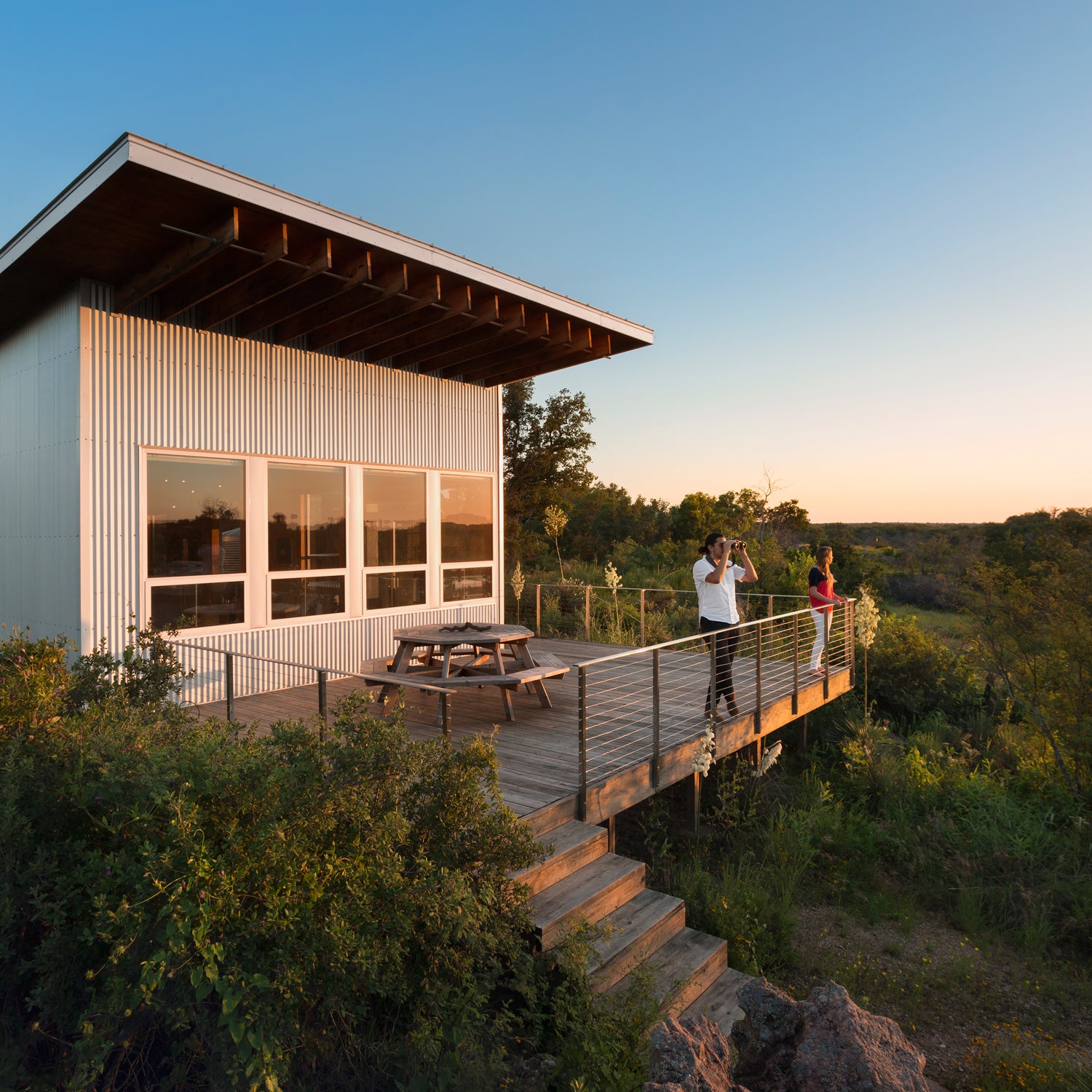It’s a cruel paradox: the older you get, the trickier it becomes to vacation with friends, even though you theoretically have more money to spend on things like, well, vacations. By age 30, you’re looking at dozens of emails just to triangulate travel dates. Toss kids into the mix and you might as well be coordinating a lunar landing.
Twenty years ago, faced with similarly chaotic lives and schedules, a group of Texas couples decided to guarantee themselves a lifetime of group getaways. They examined their options over countless dinner parties and bottles of wine, debating everything from buying a convoy of Airstream trailers (too expensive) to acquiring a plot of land on the Texas coast (ditto, plus too far away).
As time passed, they became increasingly pragmatic about finding a collective home away from home. Their “exit strategy,” as it came to be known, would have to be within 90 minutes of Austin, where three of the four couples lived, or it would be too hard to visit and maintain. It would need ample hangout space so they could maximize their time together, but all four couples would also need separate sleeping quarters with private bathrooms. Finally, it had to be as eco-friendly as possible. “Basically we wanted a place where we could spend a ton of time together—eating and drinking and hanging out—but still have privacy and separation when people needed to get away from the gang,” says Jodi Zipp, who helped lead the search with her husband, Fred.
Meanwhile, a new trend in residential construction was gaining popularity in places like Vermont, California, and Colorado: the tiny-house movement. Fueled by the 2008 recession and a less-is-more approach to living spaces, diminutive homes (typically under 1,000 square feet) were being fetishized on the Internet and then built in real life. So it was serendipitous when, in March 2011, the group finally purchased 10 acres of land on the Llano River and met with architect Matt Garcia to kick around designs. Reasoning that not everything has to be bigger in Texas, Garcia presented a compact compound of scaled-down, eco-friendly cabins.
“Everything just clicked,” says Garcia. “I mean, there are only so many ways to arrange a queen-size bed, loveseat, and bathroom, so we had the basic concepts in a matter of hours. You can move really quickly with these kinds of projects and have a lot of fun.”
Each of the 400-square-foot cabins is designed for maximum utility. Galvanized metal siding deflects the intense summer heat while sloped roofs collect rainwater to irrigate the wildflowers and natural grasses. Spray foam insulation helps regulate temperatures throughout the year, and a water treatment system located in a barn out back combines rain and well water to maintain a sustainable year-round supply of drinking water. In addition to the cabins, there’s a 1,500-square-foot commons building with a deluxe kitchen and dining area—we’re talking Bosch appliances, a giant Wolf stove, and a huge wooden table from . The commons building includes a guest room for friends of friends who might tag along on any given weekend.
Predictably in the age of tiny-house mania, a real estate blog picked up on the story, and the “Llano Exit Strategy” became an instant viral hit. “All the attention was a surprise but also an affirmation,” says Zipp. “It made us realize how many people really love the idea of having a dedicated place where you can spend time with your friends as you get older.” (Bonus: thanks to all the publicity, they have absolutely no problem renting out the compound on or about once per month.)
Meanwhile, Matt’s architecture firm has received upwards of 500 emails and phone calls from people looking to create something similar for their own groups of friends. Zipp’s advice to young people who want to craft this kind of reality someday is simple: take your time, save wisely, look at a lot of properties, agree on a budget, and find a common vision. “Always be honest with your friends,” she says. “If you can successfully navigate everyone’s ideas for what this can be, this kind of project can be an amazing experience and the perfect way to stay connected.”


